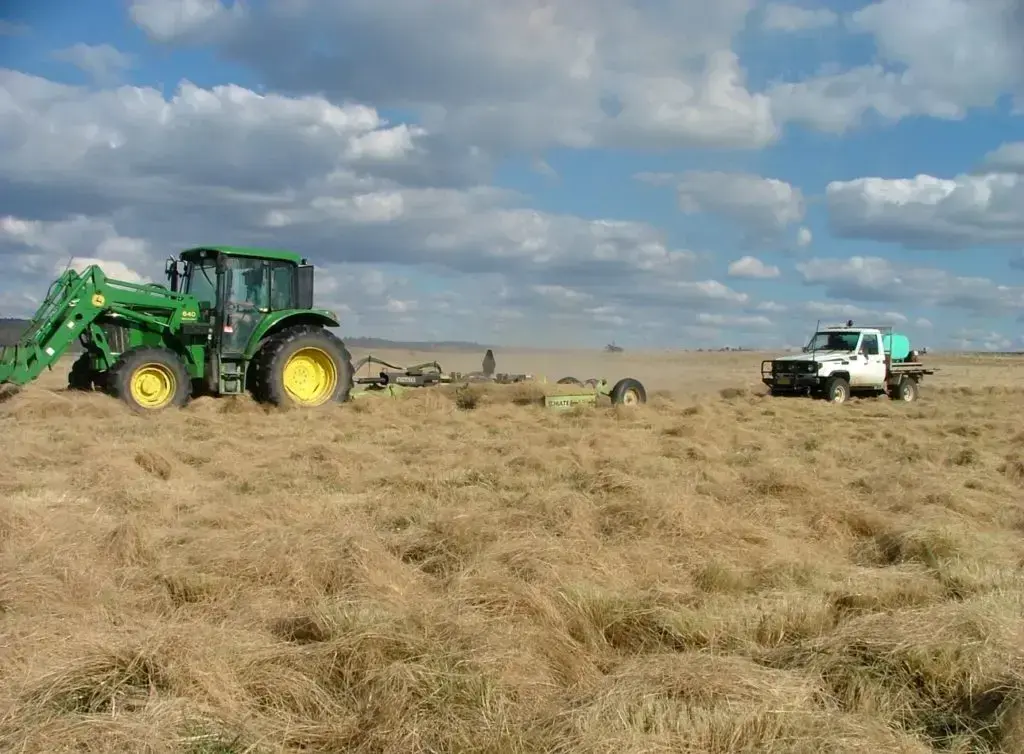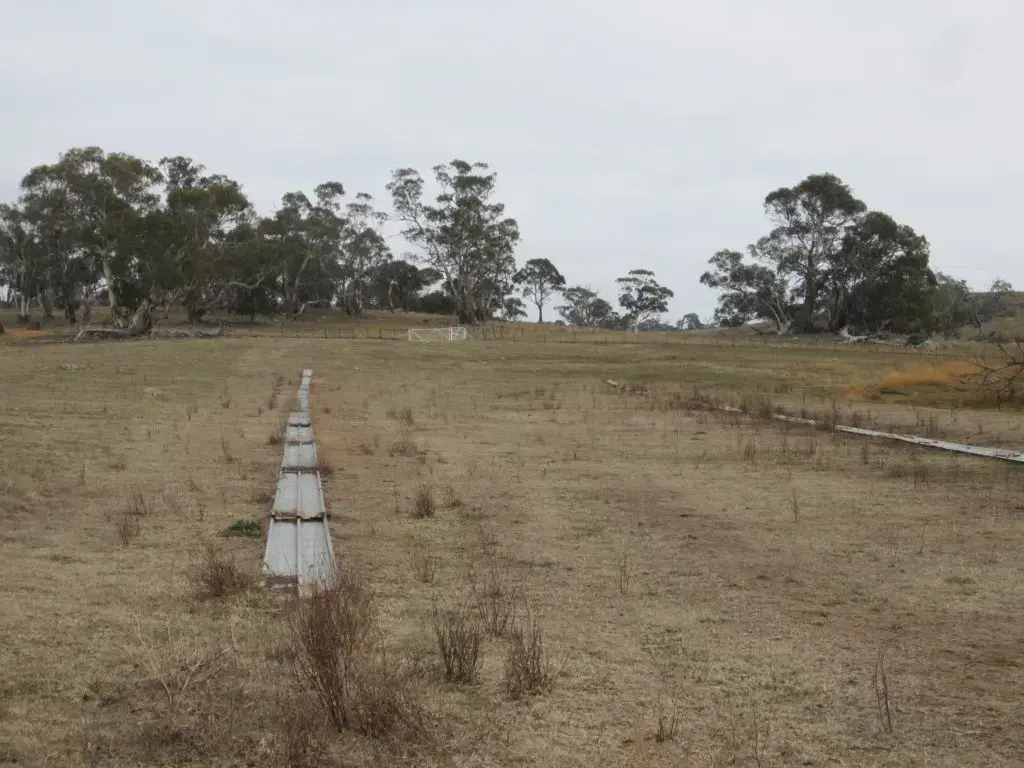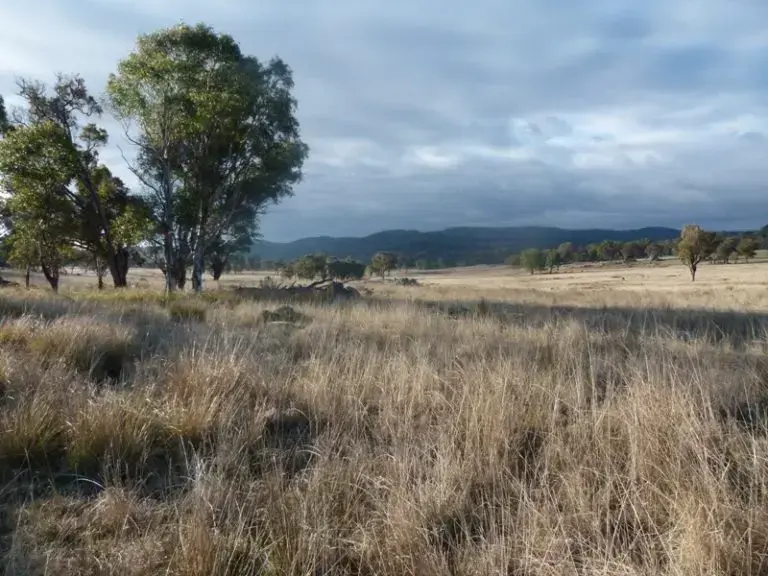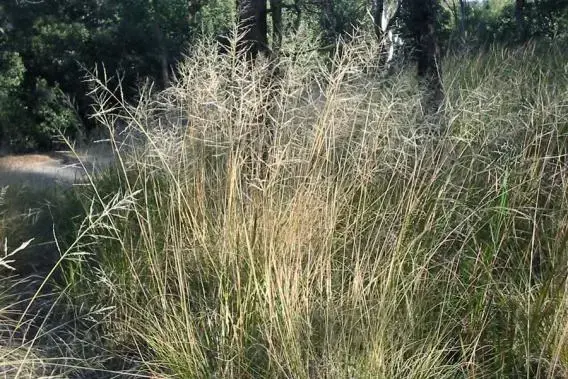Can African lovegrass be beaten? Three strategies that are working
African lovegrass (Eragrostis curvula) is one of the major scourges of pastoral agriculture in New South Wales and is a declared noxious weed in most states of Australia. It has negligible nutritional value for grazing animals and can suppress growth of more nutritious pasture species by blocking access to sunlight, soil moisture and nutrients. It can go unseen at first because it looks like other tussock grasses until seed is set, but can easily spread to dominate the pasture.
While lovegrass is a strong, persistent competitor once established, it is a weak competitor while becoming so (Firn 2009). It is therefore more likely to become a problem in degraded pastures, where there is insufficient competition to retard it. The good news is that once established, it develops a strong and deep root system and is therefore drought tolerant and can add valuable organic matter to the soil.
The examples below, from two past Soils For Life case studies as well as a new look at the practices at Coolringdon in southern New South Wales, provide some insights into how this weed has been dealt with in three different contexts.
Shannon Vale
Located in the New South Wales Northern Tablelands, Soils For Life case study property Shannon Vale shows how this scourge was controlled by an integrated strategy of fastidious attention to soil nutrition together with carefully planned pasture and stock management. Stock management on Shannon Vale posed particular logistical issues because the main stock product is pedigreed bulls. These animals need extra space or they become irritable, so using grazing pressure to control weeds (ie rotational grazing) is problematic.

Photo: Mulching on Shannon Vale
Conventional fertiliser and herbicide application and pasture re-sowing practices had led to a situation at Shannon Vale where costs were increasing while productivity could not be sustained. Seeing that the weeds, particularly African lovegrass, were winning led to the realisation that the practices that had been used were steadily degrading soil structure and fertility. Advice was obtained on pasture nutrient and compost production. Old practices were abandoned and replaced with ones based on organic fertilisers, preventing soil disturbance and regularly mulching the lovegrass before it set seed. Within 10 years, the soil organic carbon content and available phosphorus had increased markedly and lovegrass was no longer a problem.
Coolringdon
The team at Coolringdon, a merino wool property west of Cooma NSW, have also been working out how to deal with African lovegrass. A team from Soils For Life visited Coolringdon in July 2019 to understand their approach.
Coolringdon is historically significant in the context of the early settlement of the Monaro region. Stewart Ryrie, one of NSW’s pastoral pioneers, established it in 1829. From 1854, it was the centre of William Bradley’s vast Monaro holdings and was subsequently owned by John and Betty Casey. Having no dependents, the Caseys established and bequeathed the property to the John and Betty Casey Research Trust. The profits from Coolringdon support the University of Sydney to conduct research and education relevant to agricultural industries in the Monaro region on the property. Management policies since 1999 have been determined on behalf of the John and Betty Casey Research Trust by a committee of trustees as well as the farm manager.
There are several challenges at Coolringdon:
- The main farm income is from wool so a large breeding flock of merino sheep must be maintained.
- While native vegetation regulations now prevent native pastures from being replaced with improved pastures, half of the pastures are improved pastures (sown to phalaris, clovers, etc.). There are also substantial areas of native pastures (Poa species, Stipa, etc.). The native pastures tend to be sparser than the improved, which poses a challenge to maintaining adequate ground cover. The improved pasture species are notably more vigorous than the native pasture species so that with careful rotational grazing ground cover can be maintained to minimise the ability of lovegrass to invade.
- There are substantial areas of rocky ridges and hilltops on Coolringdon, many with original forest or woodland cover, where lovegrass can go unseen until it is too late to spray to prevent seed sources from developing. Together with sources on other farmland and road reserves in the area, this means that it is not practical to totally eliminate incursions.
The NSW Department of Primary Industries advises that healthy pastures are the best long-term defence against African lovegrass. Thin, bare patches and pastures with less than 70% ground cover are at more risk of invasion. The strategy adopted at Coolringdon is to minimise the opportunity for lovegrass to take hold. This strategy comprises a number of elements, the first two of which reflect the DPI NSW advice:
- Sub-dividing paddocks according to soil type, vegetation and other landscape features to increase the number of paddocks/reduce paddock size to enable more precise control of grazing. Native pastures are separated so that they can be de-stocked when necessary to maintain ground cover. There are now 80 paddocks compared with 30 in 1999.
- Using small ‘sacrificial’ paddocks – simplified feedlots – where sheep are fed with grain when pasture cover is in danger of getting over-grazed (see photo). The sheep are moved into these when, due to inadequate rain, regrowth has not caught up towards the end of the grazing cycle. While groundcover is sacrificed in these paddocks, weed incursion is easily managed with herbicides because these paddocks are small.
- Supplementing grass feeding with lucerne, which can be grown on a few of the lower-lying paddocks.
- Fertilising improved pastures to sustain vigour and productivity.
- In 2020, several projects are ongoing studying the both ground cover and African lovegrass control.

Photo: sacrificial paddock. Recycled cliplock roofing is used as double-sided troughs for grain feeding. Grain is poured in evenly along the length from a feed truck or trailer that straddles the troughs.
Lana
Also on the NSW northern tablelands, Lana illustrates an alternative approach to dealing with lovegrass. Along with Shannon Vale, Lana was one of the first Soils For Life case studies. As at Shannon Vale, traditional agricultural management was found to be running the property into the ground. The solution implemented since the 1990s started with adopting time-controlled rotational grazing. Many kilometres of fencing reduced paddock sizes from 100 – 120 hectares to 10 – 15 hectares so that grazing pressure could be managed precisely.
African lovegrass is prevalent at Lana, but isn’t found to be the problem it is at Coolringdon and elsewhere. Indeed, on this property lovegrass has an advantage over the other (mainly native) pasture species because it can produce some fibre even in the driest of dry spells.

Photo: Lana winter landscape, 2011
The key at Lana is that carefully managed rotational grazing using a ‘leader and follower’ system (in which cattle are rotated followed soon after by sheep) ensures that the lovegrass is eaten down to a minimum, is suppressed and does not take over the pasture. Trying to eliminate it with herbicide, as has been tried at Lana in the past, was found to create a worse problem because sprayed areas tended to remain barren for too long.
Conclusion
So, can African lovegrass actually be beaten? Reflecting on the above examples, an answer to that question is: maybe, but if not, at least it is possible to learn how to live with it. It might be a scourge and practically impossible to eliminate, but careful management tailored to the production system and landscape can minimise or avoid the problems that African lovegrass causes. What might work for you?
References
Firn, J. 2009. African lovegrass in Australia: a valuable pasture species or embarrassing invader?
Tropical Grasslands 43: 86-97.
Read more about the innovative strategies and regenerative agriculture solutions being implemented on Soils For Life case study farms here.





